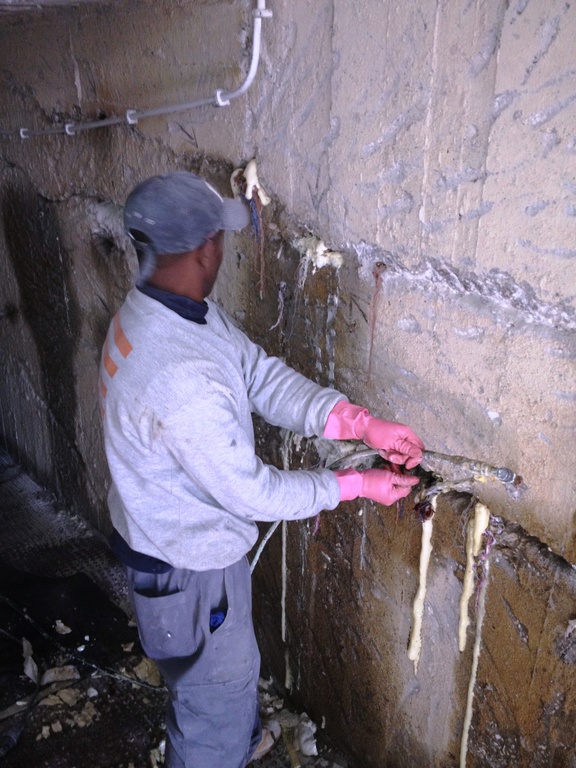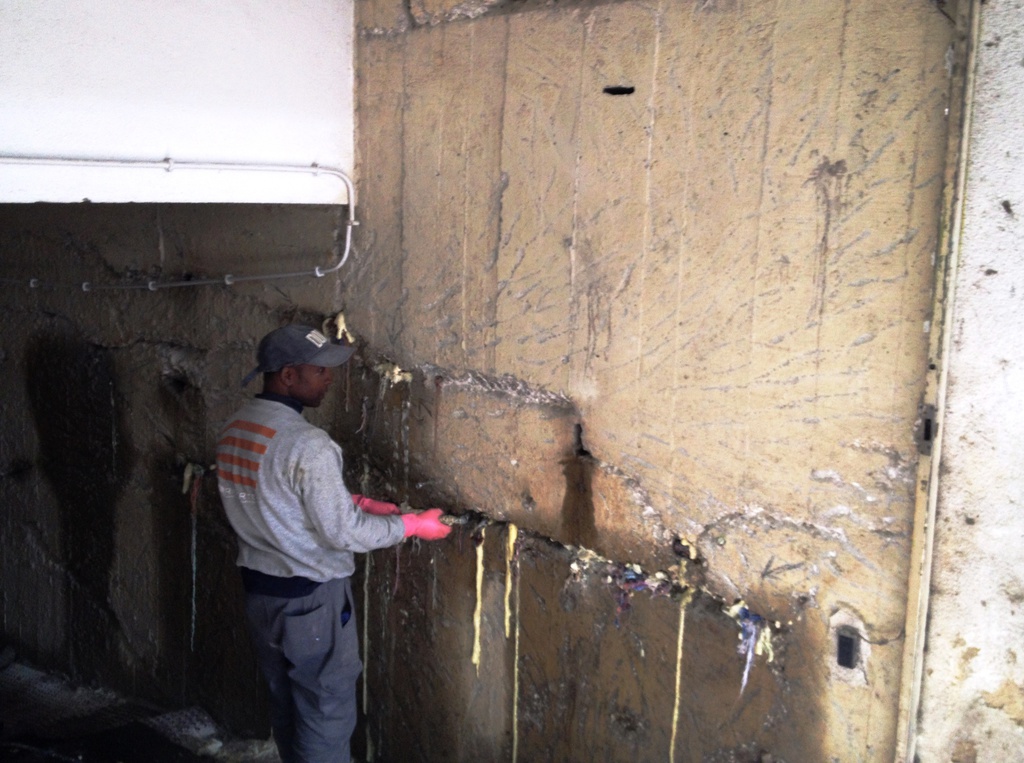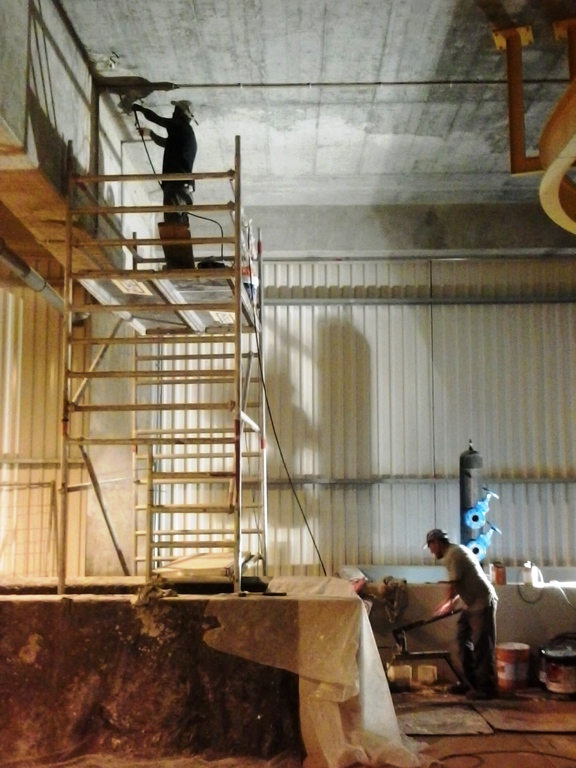Resin injection under controlled pressure
In order to obtain a correct characterization of the anomalies, it is necessary to understand the mechanism associated to the anomalies and their development, complemented with the physical and mechanical characteristics of the materials and the constructive system.
Injections are processes through which various types of syringes are introduced into the cracks of the building, which solidify and acquire certain resistances over time.
The syrups are usually liquid or suspensions characterized by their density, viscosity and strength. The syrup is pumped by a certain pressure and enters the material to be treated at another pressure.
When entering the material, the syrup circulates through the voids (cracks), causing or not increasing volume, depending on the type of application.
The elimination of infiltrations and leaks of water in constructions may be effected by the placement of membranes or waterproofing coatings or the injection of organic hydroactive products. Hydroactive grouts are liquid, low viscosity polyurethane prepolymers. When the hydroactive syrup comes into contact with the water (even if it is only moisture), a reaction begins which results in the formation of Co2 and a marked expansion. After this expansion is complete, the syrup solidifies making it rigid or flexible, in a stable and durable way.
High-performance resin injection
It can be performed on concrete, on masonry walls made of solid brick or on stone masonry. These can essentially correspond to one of three types of different materials with different purposes:
. Epoxy resins - Applied by injection under controlled pressure in reinforced concrete or PSC elements. Its purpose is to fill empty spaces (crevices, cracks, voids and all types of discontinuities), aiming at re-establishing the concrete surface of the structural element to be intervened;
. Polyurethane-based water-activated resins – Applied by injection under controlled pressure in reinforced concrete elements, aiming at rectifying/filling in cracks, crevices and all kinds of gaps. It is used when stopping water infiltrations becomes necessary, with or without pressure;
. Polyester resins – these resins are applied by injection under controlled pressure in filling gaps and crevices in structural masonry walls (solid brick and stone masonry), when it's intended to improve such elements’ capacity to endure flexure and traction stresses.
Injection of inorganic grouts
The application of inorganic binder grouts (mineral-based, such as cement, lime, hydraulic lime, pozzolana) is usually performed on old buildings’ resistant walls, aiming at restoring the concrete surface and increase the resistance of the element to be intervened. This is generally performed along existing crevices and cracks, sealed and injected at low pressure in order not to damage the vulnerable internal structure of the existing materials.
|
|
 |
 |
